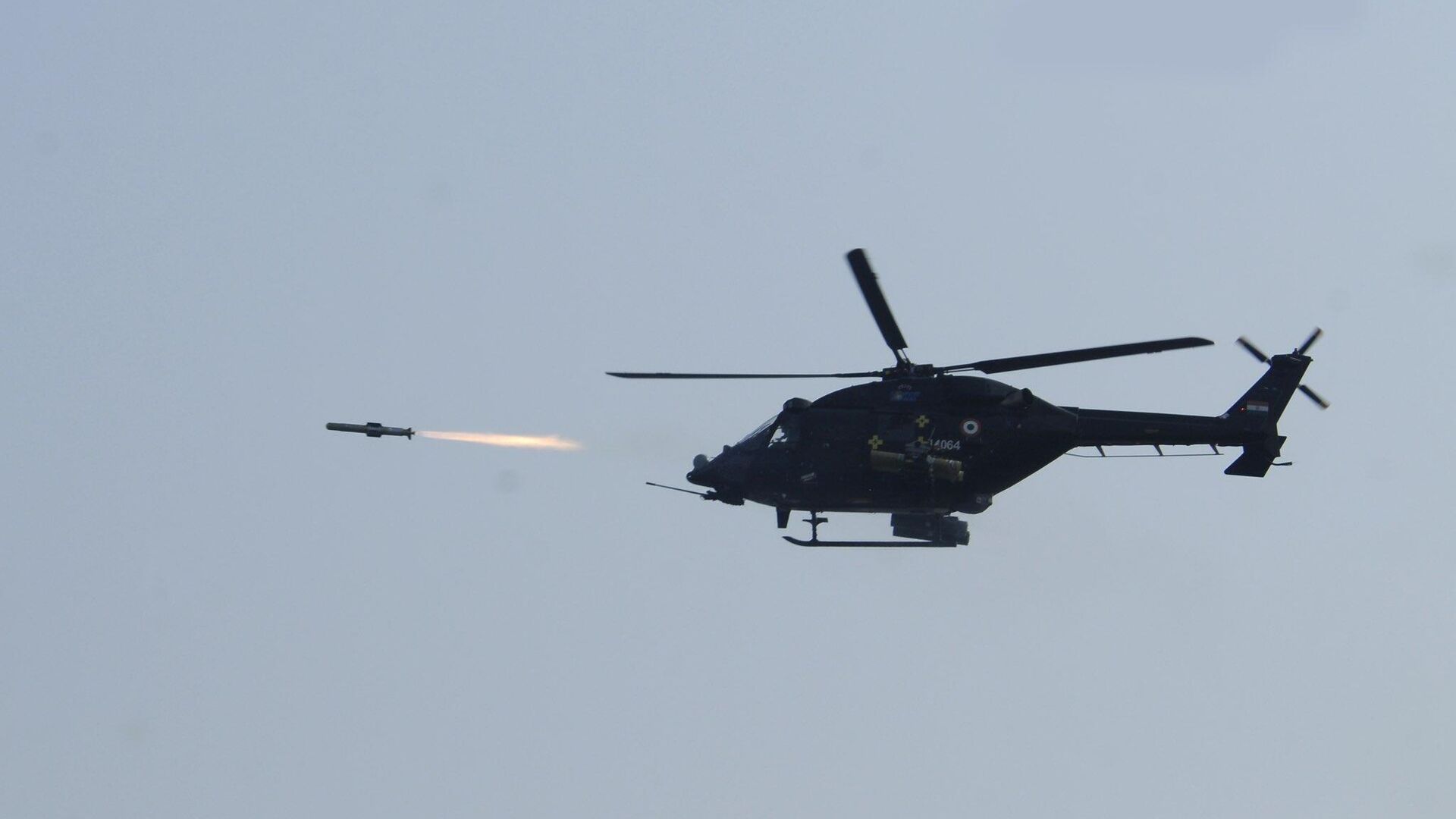https://sputniknews.in/20230111/india-approves-guided-missiles-air-defense-system-for-border-deployment-455164.html
India Approves Guided Missiles, Air Defense System for Border Deployment
India Approves Guided Missiles, Air Defense System for Border Deployment
Sputnik India
The Indian government is boosting measures to restratigize its military deployment following 2020 Galwan clash in which 20 Indian and four Chinese soldiers were killed.
2023-01-11T15:42+0530
2023-01-11T15:42+0530
2023-01-11T18:41+0530
ladakh standoff
india
china
indian army
people's liberation army (pla)
tibet
arunachal pradesh
brahmos supersonic cruise missile
https://cdn1.img.sputniknews.in/img/07e7/01/0b/470496_0:106:2049:1258_1920x0_80_0_0_3f8191ae113a5f8fc04bb451e11e8b82.jpg
India’s top defense procurement body -- the Defence Acquisition Council (DAC) -- on Tuesday approved the procurement of 500 HELINA anti-tank guided missiles and Very Short-Range Air Defence System (VSHORADS) for the northern borders with China.The council, headed by Defense Minister Rajnath Singh, also accorded acceptance of necessity, the first step towards the procurement, for the acquisition of BrahMos supersonic cruise missile launcher and fire-control system for the Shivalik class of ships and Next-Generation Missile Vessels (NGMVs) for the Navy.The third generation 7km range missile, the Helicopter Launched Nag (HELINA), will be integrated into the Advanced Light Helicopter. Its infrared imaging seeker provides day and night operational capabilities against low-silhouette tanks, both static and fast-moving. VSHORAD systems are designed to protect against low-altitude aerial threats such as aircraft, helicopters, unmanned aerial vehicles (UAVs), and cruise missiles.All these procurements will cost $523.5 million, the defense ministry added.India Boosting Border Defense CapabilitiesThe Indian Army has been pushing for the deployment of very short-range air defense (VSHORAD) systems to counter potential threats along its border with China for a long time.It is notable that the terrain in the border region is rugged and mountainous, which makes it challenging for traditional air defense systems to operate effectively.Lastly, the DAC granted approval for the procurement of a Brahmos Launcher and Fire Control System (FCS) for the Shivalik class of ships & Next Generation Missile Vessels, in a move aimed at boosting the Navy's capabilities in the face of increasing Chinese activities in the Indian Ocean.The border between India and China, spanning 3,488 kilometers, remains poorly demarcated on maps, leading to frequent clashes between the two nations' troops. On December 9, an altercation in the Tawang sector of Arunachal Pradesh state resulted in injuries to soldiers from both countries.
india
china
tibet
arunachal pradesh
Sputnik India
feedback.hindi@sputniknews.com
+74956456601
MIA „Rossiya Segodnya“
2023
News
en_IN
Sputnik India
feedback.hindi@sputniknews.com
+74956456601
MIA „Rossiya Segodnya“
Sputnik India
feedback.hindi@sputniknews.com
+74956456601
MIA „Rossiya Segodnya“
india china border clash in 2022, galwan military clash, india china border tension, what are the reasons for border dispute between india and china, how many soldiers killed in galwan, ladakh border stand-off, india border defense capabilities
india china border clash in 2022, galwan military clash, india china border tension, what are the reasons for border dispute between india and china, how many soldiers killed in galwan, ladakh border stand-off, india border defense capabilities
India Approves Guided Missiles, Air Defense System for Border Deployment
15:42 11.01.2023 (Updated: 18:41 11.01.2023) The Indian government is boosting measures to restratigize its military deployment following the 2020 Galwan clash in which 20 Indian and four Chinese soldiers were killed.
India’s top defense procurement body -- the Defence Acquisition Council (DAC) -- on Tuesday approved the procurement of 500 HELINA anti-tank guided missiles and Very Short-Range Air Defence System (VSHORADS) for the northern borders with China.
The council, headed by Defense Minister Rajnath Singh, also accorded acceptance of necessity, the first step towards the procurement, for the acquisition of BrahMos supersonic cruise missile launcher and fire-control system for the Shivalik class of ships and Next-Generation Missile Vessels (NGMVs) for the Navy.
The third generation 7km range missile, the Helicopter Launched Nag (HELINA), will be integrated into the Advanced Light Helicopter. Its infrared imaging seeker provides day and night operational capabilities against low-silhouette tanks, both static and fast-moving.
“Its induction will strengthen the offensive capability of the Indian Army,” the defense ministry said.
VSHORAD systems are designed to protect against low-altitude aerial threats such as aircraft, helicopters, unmanned aerial vehicles (UAVs), and cruise missiles.
All these procurements will cost $523.5 million, the defense ministry added.
India Boosting Border Defense Capabilities
The Indian Army has been pushing for the deployment of very short-range air defense (VSHORAD) systems to counter potential threats along its border with China for a long time.
It is notable that the terrain in the border region is rugged and mountainous, which makes it challenging for traditional air defense systems to operate effectively.
“In view of the recent developments along the Northern borders there is a need to focus on effective Air Defence (AD) weapon systems which are man portable and can be deployed quickly in rugged terrain and maritime domain,” the ministry said, adding “a robust and quickly deployable system,” will strengthen the air defence capabilities.
Lastly, the DAC granted approval for the procurement of a Brahmos Launcher and Fire Control System (FCS) for the Shivalik class of ships & Next Generation Missile Vessels, in a move aimed at boosting the Navy's capabilities in the face of increasing Chinese activities in the Indian Ocean.
The border between India and China, spanning 3,488 kilometers, remains poorly demarcated on maps, leading to frequent clashes between the two nations' troops.
On December 9, an altercation in the Tawang sector of Arunachal Pradesh state resulted in injuries to soldiers from both countries.

